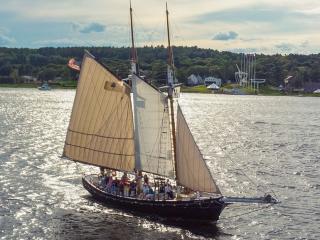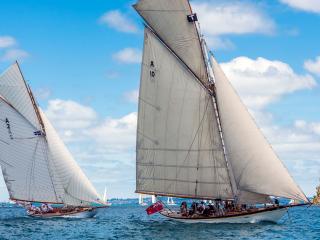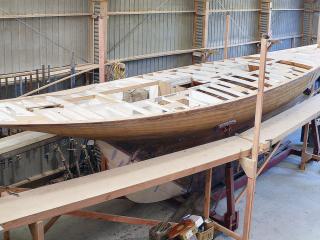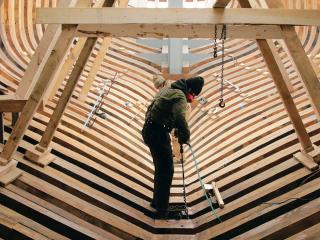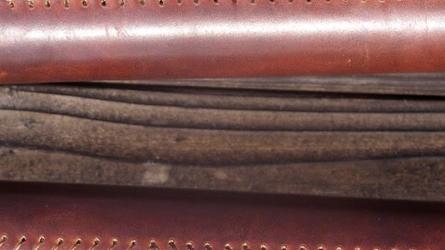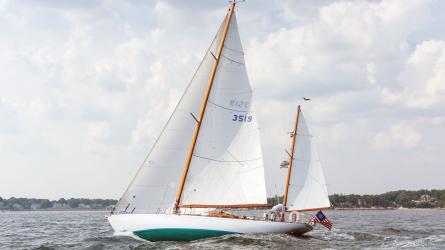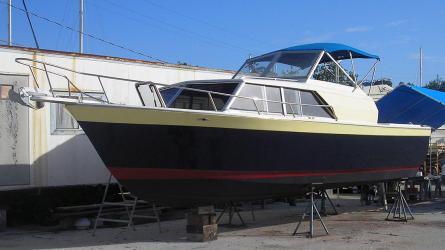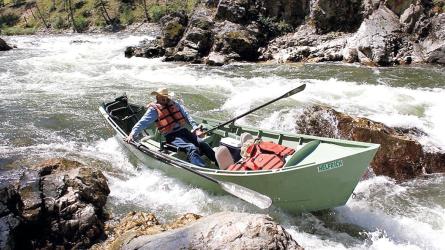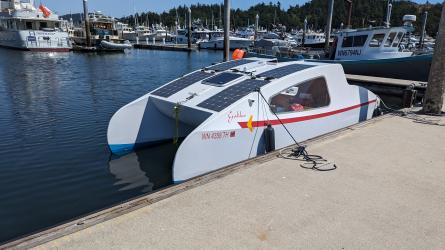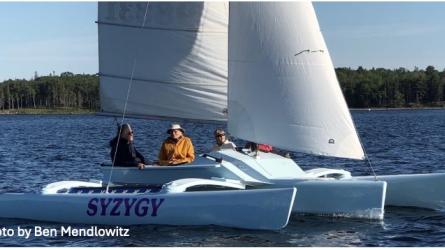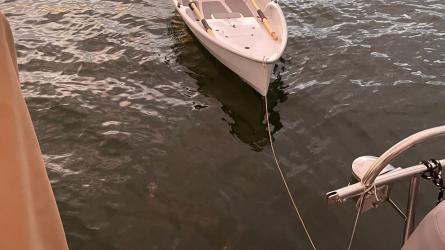January / February 2020
Eels to England
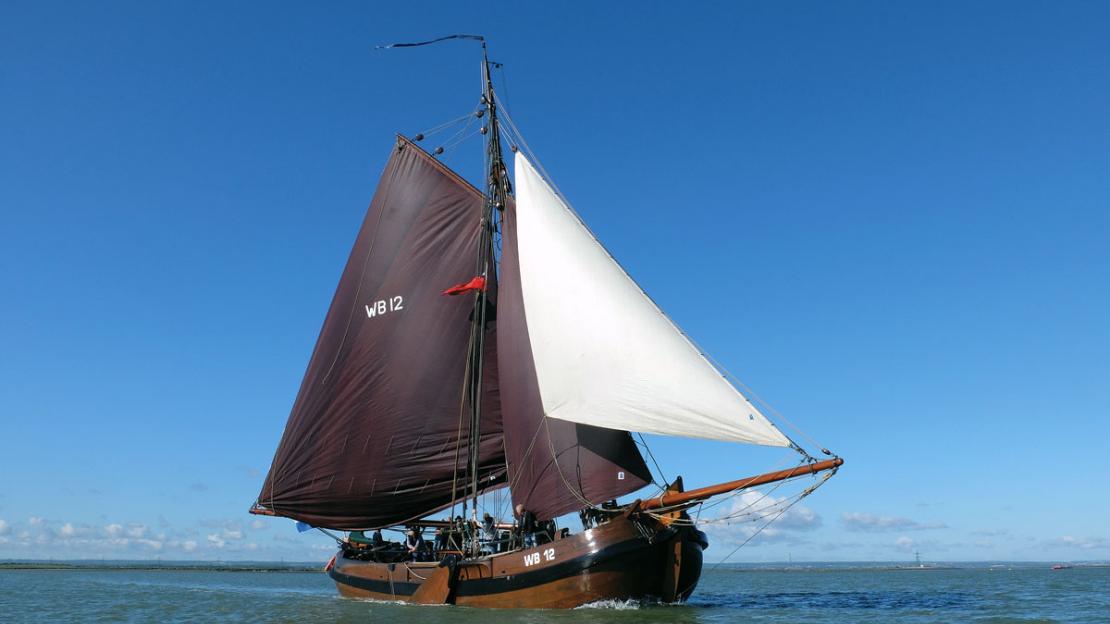
KORNELISKE YKES II sails out of Queenborough, England, at the mouth of the River Thames on a historic journey with an environmental mission. She’s a newly built reproduction of the type of eel barges that commonly sailed between Holland and England from the 17th century until the last one left London about 80 years ago. The masts on the eel barges are placed farther forward than on most other Dutch barges to allow room for the “wet hold.”
It was an undoubtedly historic event: the first Dutch barge to sail up the River Thames to London with a cargo of eels for more than 80 years. The boat’s volunteer crew had worked for more than a year, raised more than €25,000 ($27,849), and sailed more than 250 miles to achieve their goal. Only one obstacle now lay between them and their final destination: the majestic Tower Bridge. But London’s iconic monument doesn’t open for just anyone, so Klaas Overzee decided to go straight to the top and write to the Queen.
“Dear Madam,” he wrote. “I would like to ask your advice and help if possible to allow for a replica of an eel barge the KORNELISKE YKES II to return to its original mooring in June this year. During Elizabeth I’s reign and beyond, these barges carrying 60 to 80 thousand live eels would come across from Friesland in Holland to provide the people of London with food.… Unfortunately, Tower Bridge has become an obstacle to this wish, and I wonder if Your Majesty is able to make any suggestions as to who to approach in order to achieve a fitting completion to this ship’s historic journey by letting it pass Tower Bridge.”
Six days later, the Queen (or rather, her deputy correspondence coordinator) replied: “The Queen was most interested to know of the history of the Dutch eel barges in providing food for the people of London since the reign of Elizabeth the First and that your direct ancestor captained one of these barges. I should tell you, however, that this is not a matter in which Her Majesty would personally intervene. Nevertheless, as a constitutional Sovereign, The Queen acts on the advice of her Ministers and I have, therefore, been instructed to send your letter to…the Secretary of State for the Department for Digital Culture, Media, and Sport so that your approach to Her Majesty and the points you raise may be considered.”
To read the rest of this article:
Click the button below to log into your Digital Issue Access account.
No digital access? Subscribe or upgrade to a WoodenBoat Digital Subscription and finish reading this article as well as every article we have published for the past 50-years.
ACCESS TO EXPERIENCE
Subscribe Today
To read articles from previous issues, you can purchase the issue at The WoodenBoat Store link below.
 Purchase this issue from
Purchase this issue from
